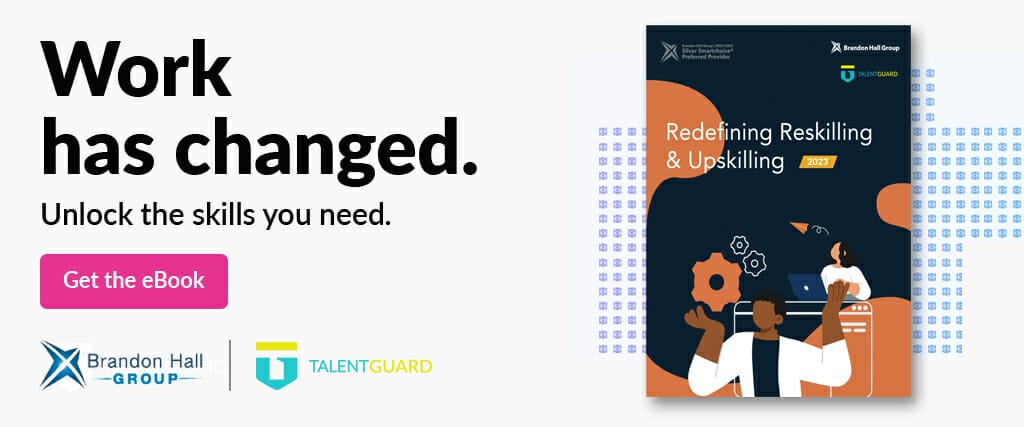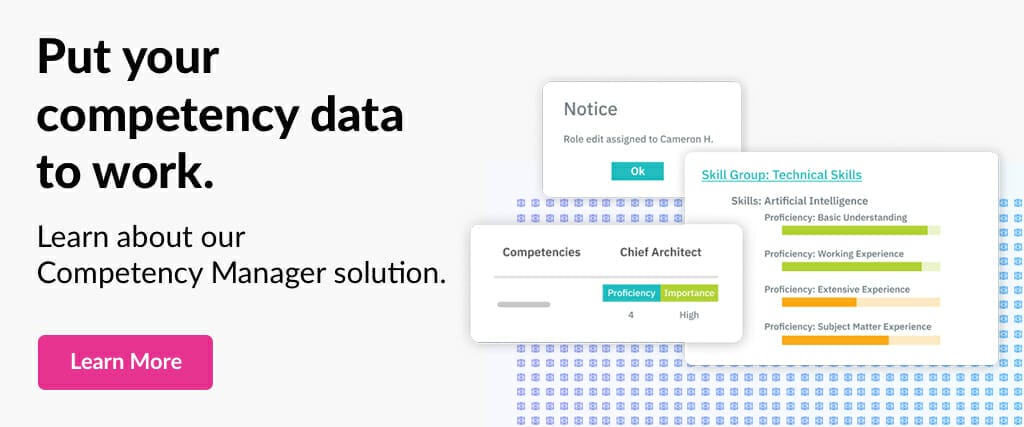Key Difference Between Skills vs. Competencies

Breaking it Down- Skills vs. Competencies: The modern workplace demands a clear understanding of workforce capabilities. Organizations often grapple with the decision of whether to use competencies or skills when defining work, developing employees, and managing talent. While both are essential, they serve different purposes and have distinct advantages and limitations. So, what’s the differences between skills vs. competencies. The difference between a skill and a competency lies in scope and application. Let’s explore.
Skills: Agile and Efficient
Skills are more granular and adaptable. A skill-based approach focuses on specific, measurable abilities that can be easily updated and applied across various job functions. This makes skills particularly valuable in industries undergoing rapid technological change, where employees must continuously learn and apply new capabilities. A skills-based approach enables companies to quickly identify talent gaps, upskill employees, and match workers to evolving job requirements. Skills can be acquired and demonstrated more easily than broader competencies, making this approach particularly effective for workforce agility, project-based work, and cross-functional collaboration. A skill is a specific, learned ability or expertise that enables a person to perform a task. Skills are often technical or task-oriented, like coding, data analysis, public speaking, or project management. Skills are measurable and can be developed over time through training, practice, or experience.
Competencies: Powerful, with Limits
Competencies provide a comprehensive view of an individual’s ability to perform in a job role. They encompass not only technical expertise but also behavioral attributes, soft skills, and contextual knowledge. This holistic approach helps organizations align employees with long-term strategic goals, ensuring that workers possess the right combination of knowledge, behaviors, and attitudes to succeed.
However, competencies can also be rigid and slow to adapt to the fast-paced nature of today’s workforce. Because they are often defined broadly and linked to job roles, updating competency frameworks to keep pace with industry shifts can be time-consuming. Additionally, competency-based approaches require extensive assessment and validation, making them more resource-intensive to implement effectively.
Speaking the Language of Work
Organizations need a structured way to define and communicate work-related expectations. Competencies and skills provide this structure, but they operate at different levels of granularity. Competencies offer a broader framework that includes foundational abilities, making them useful for long-term career development, succession planning, and organizational alignment. Meanwhile, skills act as the building blocks of work, allowing organizations to track, measure, and refine workforce capabilities with precision. Using a common language that integrates both competencies and skills can bridge the gap between strategy and execution. Companies that successfully balance the two can ensure that their workforce remains both strategically aligned and operationally flexible.
Employees are often told that they need to improve their skills and be more competent in their position in order to advance in their careers. Unfortunately, employees mistake skills and competencies as one and the same. After all, a skill sounds very similar to a competency to the average employee. This failure is the result of general knowledge and a lack of communication.
Many managers and HR teams may not effectively communicate the proper definitions for these terms to their teams. This can create gaps when employees are looking for guidance on how to further their careers. If managers confuse these capabilities they could end up leading their employees on the wrong path.
Fortunately, this misunderstanding can be corrected at both the organizational and individual level. Clearly communicating and defining the difference between skills and competencies can help managers and HR teams create better development plans for their employees. These employees can then potentially fill key roles in the organization later on in their career. Let’s learn more about skills management.
So, What’s The Difference between Skills vs. Competencies?
Generally, a competency is much more difficult to learn than a skill. An employee can take a 20 hour Quickbooks course and become fairly skillful using the software. A competency, such as negotiating, cannot be taught in a 20 hour course.
Generally, employees will be eager to learn new skills whenever they are given a chance. When it comes to developing their competencies, employees may not be as eager. An employee learning to become more component in their position is more akin to changing how they work and their behavior. That is a much more difficult change to make. It can take years to change an employee’s personal behaviors. This can have dramatic effects on the long-term career trajectory of an employee.
A stock broker could be the best trader and analyst in the world, but if they lack interpersonal abilities and cannot handle stress then they may not be able to perform the job effectively. A less-skilled stock broker with better interpersonal abilities who can handle stress may actually perform better in the position.
Competencies can be more difficult to judge as well when trying to evaluate an employee or candidate. A skill is generally easier to quantify. A typing test measuring how many words per minute a candidate can type will showcase their typing skills. Meanwhile, judging if an employee is competent in their position can be much more subjective and difficult.
Which Is More Important?
Both skills and competencies are important to the development of any employee. Employees cannot display competencies without certain skills that are required for their position. In order to advance in their career, an employee must learn and improve both capabilities.
A narrow focus on skills will lead to employees that have all of the skills to succeed, but do not have the other intangibles that are necessary to fill key positions. HR teams clarifying the terms will help both employees and managers get on the same page on what employees need to work on to advance their careers. This should lead to a reduction in employee turnover and improve employee engagement.
Establishing clear definitions can help your organization grow more skillful, competent employees. A shared understanding of these terms will eliminate any confusion both inside and outside the company.
Should You Use Competencies or Skills?
The choice between competencies and skills depends on an organization’s goals and operational needs. If the objective is to develop a structured, long-term talent strategy that aligns with business objectives, competencies provide the necessary framework. If the focus is on adaptability, rapid upskilling, and responding to evolving job demands, a skills-based approach may be more effective.
Ultimately, the most effective talent strategies incorporate both competencies and skills. By leveraging competencies for strategic workforce planning and skills for tactical workforce agility, organizations can create a dynamic, future-ready workforce that is equipped to meet both current and future challenges.
To learn more about how to leverage skills vs. competencies inside your organization, request a demo or take a look at our competency management software
For more helpful information and best practices, check out the webinar called:
How to Build an Adaptive AI-Assisted Career Architecture
Visit the Brandon Hall Group to learn more about the difference between skills vs. competencies.
Frequently Asked Questions for Skills vs. Competencies:
What are Skills vs. Competencies on a Resume?
Core competencies refer to a candidate’s fundamental strengths that align with job responsibilities and organizational goals. These typically include leadership abilities, problem-solving skills, adaptability, and industry-specific expertise. Core competencies highlight a person’s overall capacity to succeed in a role.
Skills, on the other hand, are specific, learned abilities that can be measured and applied to job tasks. Examples include programming languages, data analysis, project management, and proficiency in software applications. While competencies describe how a person approaches work, skills focus on what they can do.
How Do You Identify Skills and Competencies?
Identifying skills and competencies involves a combination of self-assessment, feedback, and performance evaluation. Organizations and individuals can use these methods:
- Self-assessment: Employees and job seekers can reflect on their experiences, training, and past work to identify their strengths and areas for growth.
- Managerial feedback: Leaders and supervisors can evaluate employees based on performance metrics and observed behaviors in the workplace.
- Job analysis: Reviewing job descriptions and industry trends helps pinpoint which competencies and skills are critical for success.
- Competency frameworks: Many organizations use structured frameworks to define key competencies and map them to career progression paths.
- Assessments and tests: Skill-based assessments, psychometric tests, and 360-degree feedback provide objective insights into an individual’s capabilities.
What is an Example of a Skill and a Competency?
A skill is a specific ability that can be learned and measured. For example, “data analysis” is a skill that involves using tools and techniques to interpret complex datasets and derive insights.
A competency is a broader capability that combines knowledge, behaviors, and skills. For example, “strategic thinking” is a competency that requires analytical skills, problem-solving abilities, and the capacity to make informed decisions aligned with long-term goals.
While skills are the building blocks of competencies, competencies provide a more holistic view of an individual’s ability to perform effectively in a role.
Other Resources:
Unlocking the Power of Skills and Why Your Company Needs a Skills Inventory Tool
Risks of Ignoring a Skills-Based Approach to Workforce Development
Importance of Job Architectures in Achieving Equality
Companies have always had a hard time determining the right approach for designing a job architecture that supports pay equality, and diversity. It’s a complicated process when you have to ensure you hire and develop the right talent, adhere to diversity measures, all while making sure you’ve achieved pay equality.
Why Your Hiring Freeze Shouldn’t Scare You
Due to hiring freezes, a large number of companies have been abruptly limited to their existing talent pools to staff projects and fill skill gaps. However, we don’t think that should scare you. Instead, if you focus your energy on the optimizing your existing workforce, you can overcome these obstacles and set yourself up for success in the long-run.
Taking the Right Approach to Developing Critical Skills
Gartner’s 2020 Future of HR Survey names building critical skills as the #1 priority – together with addressing internal skills gaps. To identify the skills your organization needs, Gartner recommends a ‘’market driven, predictive approach’’. This requires both an understanding of the trends in your specific sector, together with a skills audit to gain an accurate picture of the skills your business needs to grow and remain competitive.





